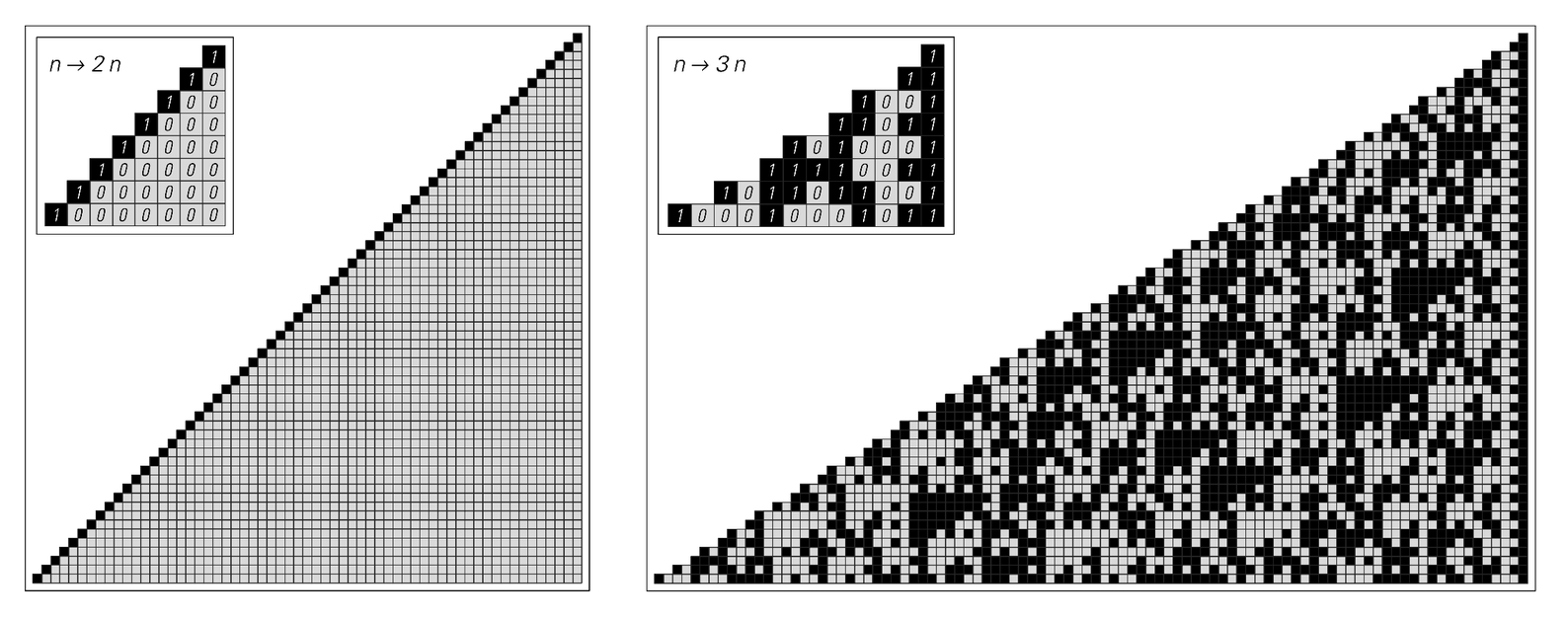But if the multiplication factor at each step is 3, rather than 2, then the pattern obtained is quite different, as the second picture below shows. Indeed, even though the only operation used was just simple multiplication, the final pattern obtained in this case is highly complex.
The picture on the next page shows more steps in the evolution of the system. At a small scale, there are some obvious triangular and other structures, but beyond these the pattern looks essentially random.
So just as in simple programs like cellular automata, it seems that simple systems based on numbers can also yield behavior that is highly complex and apparently random.
But we might imagine that the complexity we see in pictures like the one on the next page must somehow be a consequence of the fact that we are looking at numbers in terms of their digit sequences—and would not occur if we just looked at numbers in terms of their overall size.
A few examples, however, will show that this is not the case.
To begin the first example, consider what happens if one multiplies by 3/2, or 1.5, at each step. Starting with 1, the successive numbers that one obtains in this way are 1, 3/2 = 1.5, 9/4 = 2.25, 27/8 = 3.375, 81/16 = 5.0625, 243/32 = 7.59375, 729/64 = 11.390625, ...

Patterns produced by starting with the number 1, and then successively multiplying by a factor of 2, and a factor of 3. In each case, the digit sequence of the number obtained at each step is shown in base 2. Multiplication by 2 turns out to correspond just to shifting all digits in base 2 one position to the left, so that the overall pattern produced in this case is very simple. But multiplication by 3 yields a much more complicated pattern, as the picture on the right shows. Note that in these pictures the complete numbers obtained at each step correspond respectively to the successive integer powers of 2 and of 3.



